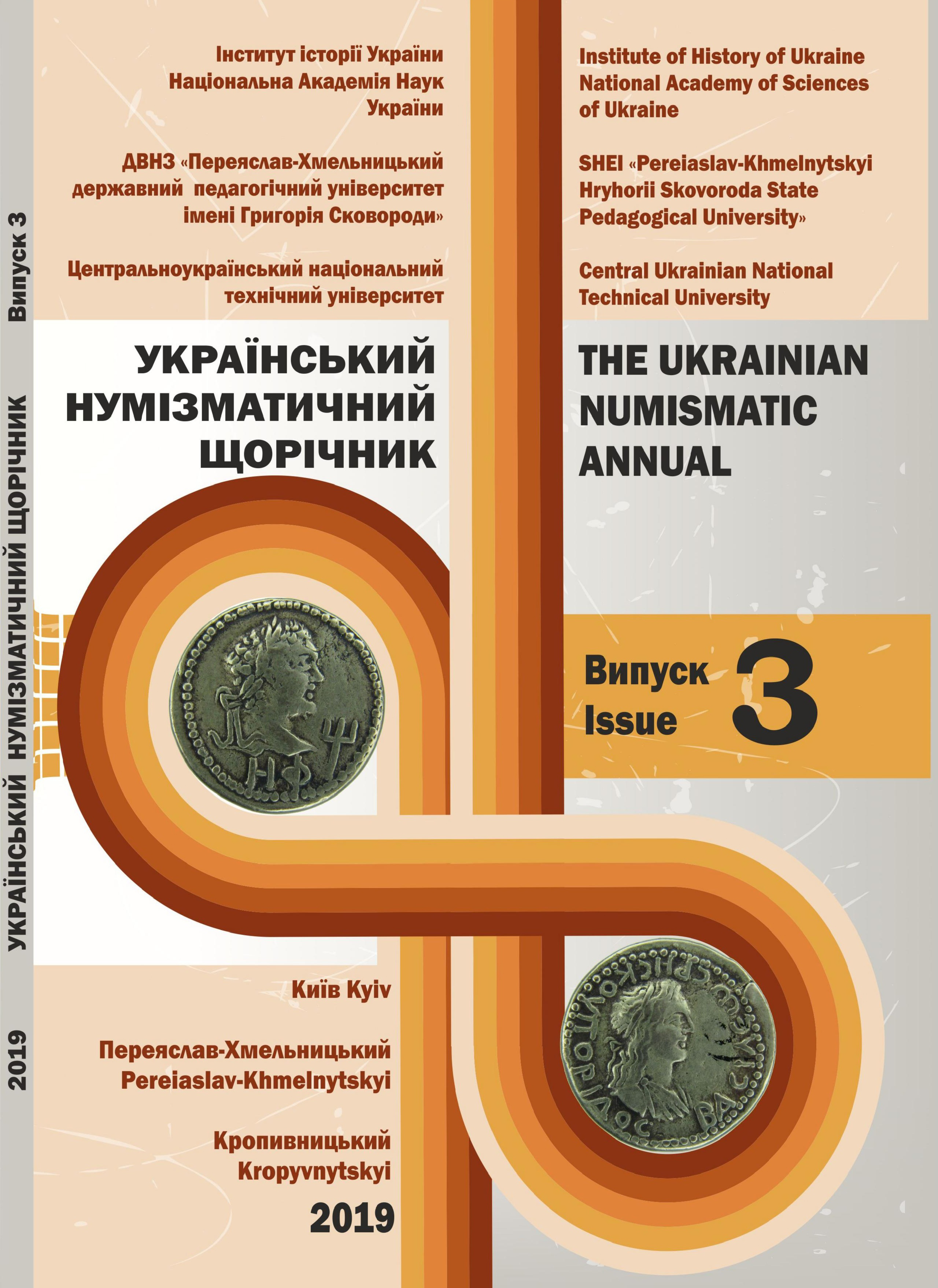МОНЕТИ РИМСЬКОГО ЧАСУ З ШКІЛЬНОГО МУЗЕЙНОГО ЗІБРАННЯ ГАЙВОРОНЩИНИ
THE ROMAN COINS OF THE SCHOOL MUSEUM COLLECTIONS OF THE HAYVORON DISTRICT
Author(s): Mykola Tupchienko, Alexander PeresunchakSubject(s): History, Archaeology, Cultural history, Economic history, Ancient World
Published by: ДВНЗ Переяслав-Хмельницький державний педагогічний університет імені Григорія Сковороди
Keywords: Roman Empire; culture; barbarian world; coin; silver; copper:
Summary/Abstract: The article «Roman Coins from the School Museum Collection of the Haivoron Region» is devoted to the publication of Roman coins from the museum collection of the Zavallia Secondary School of I-III degrees in Haivoron district. The purpose of the study is to attribute the numismatic material of the collection and to conduct its scientific description and analysis in an attempt to search the place of Roman coins of this collection in the overall picture of the monetary relations of the Roman Empire with the barbaric world. The source of the study was the school numismatic collection of Roman coins of II-IV centuries AD. Methods of scientific description, typological and historical methods, as well as the method of scientific reconstruction, were used during the research. The collection of antique Roman coins of the Zavallia School consists of 27 full solid coins and 2 fragments of coins. They were found in 7 different Chernyakhiv culture settlements on the territory of the Haivoron district of the Kirovograd region and Savran district of Odessa region. The school collection contains 20 silver denarii, 2 fragments of denarii imitation, 1 drachma, 1 antonian, as well as 2 copper folios and 1 copper semifolis. Silver coins are dated from the beginning of II century A.D. (denarii of Hadrian (117-138 A.D.)) to the middle of the third century A.D. (antonian by Gordian III (238-244 A.D.). Denarii by Mark Aurelius (161-180 A.D.) and denarii by Commodus (177-192 A.D.) are represented in 4 copies each. Most of the denarii are dated the beginning of the second century (Adrian ((117-138 AD)) – the beginning of the third century (Caracalla (211-217 A.D.).
Journal: Український Нумізматичний Щорічник
- Issue Year: 2019
- Issue No: 3
- Page Range: 42-52
- Page Count: 11
- Language: Ukrainian

